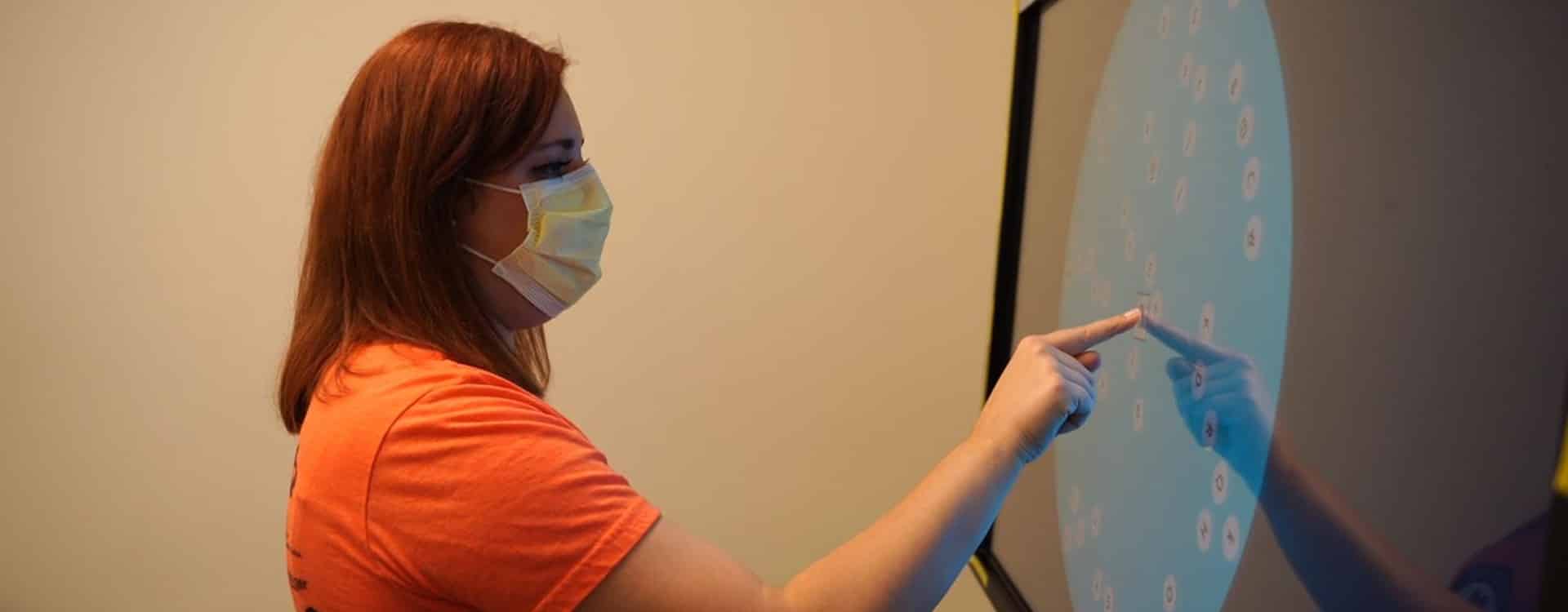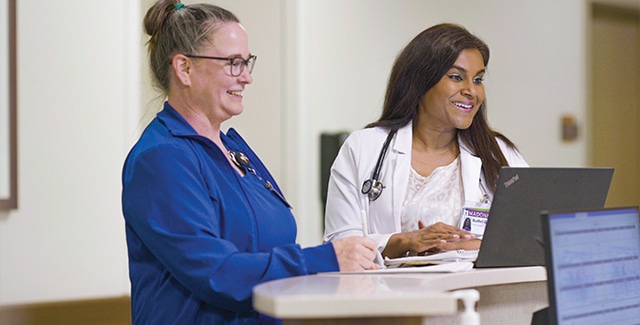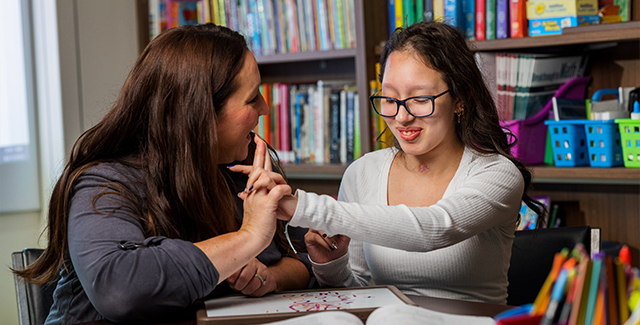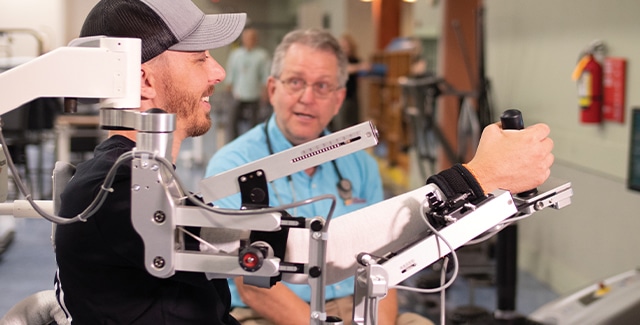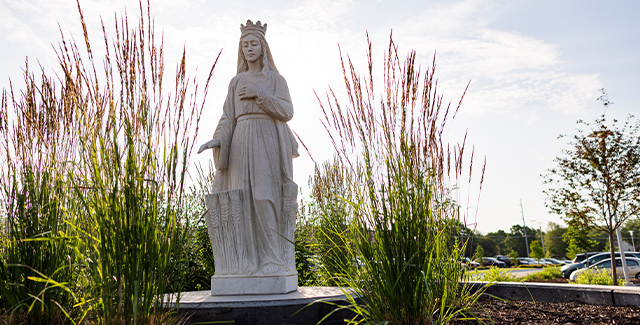Since March 2020, there have been roughly 536,000 confirmed positive COVID-19 cases in Nebraska. However, the real number is estimated to be much higher, thanks to asymptomatic cases or, like in my case, the virus was so new, there was no way to test it. Thankfully, with the creation of the vaccines, the focus has shifted to helping those of us who were, and still are, dealing with lingering post-COVID symptoms.
My name is Mackenzie Huck, and I am a Marketing, Media and Public Relations Specialist here at Madonna. I am blessed to work for an organization that is on the leading edge of post-COVID rehabilitation. It’s a unique opportunity to see firsthand how an interdisciplinary approach to therapy can relieve post-COVID symptoms.
I contracted COVID-19 in April 2020. For a week and a half, I experienced all the classic symptoms, from chest pain to coughing, shortness of breath, fatigue, and loss of taste and smell. I thought after I was over the initial infection, I’d get back to normal. But normal just never came.
I had crippling fatigue, my heart would race while sitting on the couch, and I would be gasping for air simply walking up a flight of stairs or talking on the phone. The worst was the brain fog. I had trouble comprehending what people were saying, and in the middle of a task, I wouldn’t remember what I was supposed to be doing. I couldn’t even sit through an episode of a TV show without getting a headache. I started to stay home more and spent less time being social as a way to conserve what little energy I had.
Seeking out help for post-COVID symptoms
In December 2020, I finally admitted to myself that something might be wrong. New research emerged, outlining the concept of COVID “long hauler” symptoms. I brought that idea to my primary care provider, who immediately recommended I see a pulmonologist for shortness of breath and tachycardia. The pulmonologist said the results of my pulmonary function test were within the normal range. The heart monitor I wore came back with normal results. My fatigue and brain fog were attributed to mood and sleep disorders. At this point, I really thought, “This may just be the way you are.”
It may sound funny, but even though I created marketing materials for Madonna’s new post-COVID clinic, I never thought about participating as a patient. While promoting the clinic, I met several people dealing with post-COVID symptoms that seemed far worse than my own. People who had lost their jobs because they were so fatigued or had trouble simply breathing. Madonna helped them get their life back. I thought this clinic is for people who are really sick. I was, by all accounts, functioning like normal. I could work full-time. Admittedly, I didn’t have much of a social life, and I needed a nap most days, but I chalked it up to being a real adult.
Finding a glimmer of hope
A conversation with Dr. Samuel Bierner, Madonna’s medical director of acute rehabilitation on the Omaha Campus, changed my thinking. He explained that the symptoms I was experiencing were common among people who had COVID-19 but didn’t require hospitalization. He also told me that because COVID-19 impacts the nervous and vascular systems, the effects won’t show up on pulmonary function tests or heart monitors. Many people were passing these tests and weren’t getting the answers they needed. Even though I was still worried about not being “sick enough” for Madonna’s post-COVID clinic, my doctor sent over a referral for physical, occupational and speech therapy.
Discovering the answers with physical therapy
My initial evaluation started with physical therapy. My PT, Jake Massey, conducted a baseline test for my resting heart rate and my heart rate while exercising. According to my Apple Watch, my heart rate had jumped to 126 while brushing my teeth that morning. I told him about the chest tightness and pounding heart I dealt with, even just sitting on the couch. He reassured me what I was experiencing was normal.
Over the next four weeks, we worked on starting slow, gradually increasing exercise, and bringing my heart rate up, but to a level that makes sense for the activity. I learned how to breathe from my diaphragm. On the first day, I walked roughly 1,300 feet in six minutes, with my heart rate averaging in the upper 130s. By my last day of therapy, I walked 1,700 feet in the same time, with my heart rate only getting to 115. Not only did I feel less out of breath, but I also had real numbers that showed I had walked further with less effort. I was ecstatic! I had noticed over the last few weeks that I had more energy, but this hard evidence confirmed that I was actually getting better. The physical proof of my success did wonders for my mental health too. Moving my body again without fear of chest pain or breathlessness felt so good. Going on my ‘low and slow’ walks, as we called them, brought me joy.
Fighting post-COVID brain fog with occupational and speech therapy
I also worked with Erin Connelly, an occupational therapist, and Allison Carson, a speech-language pathologist and the outpatient speech therapy clinical supervisor, to improve my mental stamina. During my initial evaluation, Allison gave me a memory test. It took 20 minutes and challenged both my short-term memory and long-term recall. I missed one point on the entire thing. I felt disheartened again as if this test proved I wasn’t sick enough. But then, Allison asked me a simple question. She asked if I had a headache. I did. It had steadily gotten worse during our session. She then gave me a self-assessment that asked me to rate how much my post-COVID symptoms impacted my life. I was shocked at the result. Based on that test, I was only living 60 percent of the life I wanted to live. My post-COVID symptoms were affecting nearly half of my life. Afterward, I went home and took a three-hour nap.
